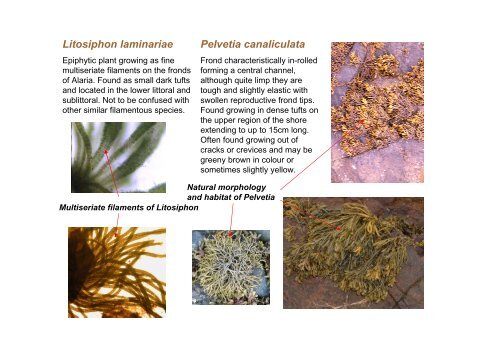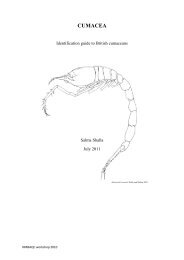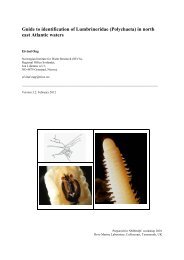s A Field Guide to the British Seaweeds - NMBAQC
s A Field Guide to the British Seaweeds - NMBAQC
s A Field Guide to the British Seaweeds - NMBAQC
Create successful ePaper yourself
Turn your PDF publications into a flip-book with our unique Google optimized e-Paper software.
Li<strong>to</strong>siphon laminariae<br />
Epiphytic plant growing as fine<br />
multiseriate filaments on <strong>the</strong> fronds<br />
of Alaria. Found as small dark tufts<br />
and located in <strong>the</strong> lower lit<strong>to</strong>ral and<br />
sublit<strong>to</strong>ral. Not <strong>to</strong> be confused with<br />
o<strong>the</strong>r similar filamen<strong>to</strong>us species.<br />
Pelvetia canaliculata<br />
Frond characteristically in-rolled<br />
forming a central channel,<br />
although quite limp <strong>the</strong>y are<br />
<strong>to</strong>ugh and slightly elastic with<br />
swollen reproductive frond tips.<br />
Found growing in dense tufts on<br />
<strong>the</strong> upper region of <strong>the</strong> shore<br />
extending <strong>to</strong> up <strong>to</strong> 15cm long.<br />
Often found growing out of<br />
cracks or crevices and may be<br />
greeny brown in colour or<br />
sometimes slightly yellow.<br />
Natural morphology<br />
and habitat of Pelvetia<br />
Multiseriate filaments of Li<strong>to</strong>siphon




